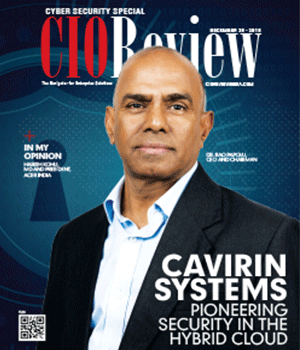
What are the Zero Trust Model Banks are Counting on?
Samrat Pradhan (Correspondent) | Thursday, 29 October 2020, 14:10 IST

To protect data from malicious attacks, Many banks today still rely on a “castle-and-moat” approach, also known as “perimeter security.” Hence today with the increasing security related to the advanced threats, banks that use perimeter security invest heavily in fortifying their network perimeters with firewalls, proxy servers, honeypots, among others, are like medieval castles protected by stone walls, moats, and gates in the current juncture.
Understanding this, numerous financial institutions are now moving beyond this paradigm and employing a modern approach to cybersecurity with Zero Trust model. The critical principle of a Zero Trust model is to trust no one - internal or external— by default. Hence, requiring strict verification of every person or device before granting access.
A Zero Trust model takes a more robust approach of managing access to the data, identities and devices within the proverbial castle. As the castle's perimeters continue to be important, this means that an automatic access to data is not a given, whether an insider acts maliciously or carelessly, or veiled attackers make it through the castle walls.
How has been Zero Trust model empowering bankers and customers:
With an increasing number of real-world examples, the benefits of a Zero Trust approach have been well documented and have prevented sophisticated cyberattacks. However, many banks today still adhere to practices that diverge from Zero Trust principles.
Furthermore, by confidently supporting initiatives that give employees and customers more flexibility, adopting a Zero Trust model can help banks significantly strengthen their security posture.
Today, both bank employees and customers have come to expect a more dynamic experience using real-time data. But, banks that rely on a castle-and-moat approach to security are hesitant to disperse data outside the physical network.
For a long time, sharing real-time model updates with other bankers or traders have been cumbersome for bankers or financial advisors from the initiation. Hence, a new era of intelligent security—powered by the cloud and Zero Trust architecture—that can streamline and modernize security and compliance for banks has been the most crucial, especially in these times where security risks have significantly increased.
CIO Viewpoint
From VPNs to Zero Trust: The Transition to a...
By Shankar Venkatesan, Senior IT Leader, Avalon Technologies
The Cyber Security Spar in Integrating IT and...
By Vimal Goel, CIO, HPCL-Mittal Energy
Towards Cyber Resilience: A Data-Centric...
By Puneet Gupta, Vice President & Managing Director, NetApp India/SAARC
CXO Insights
Emerging Trends, Challenges & Future Prospects...
By Sujoy Brahmachari, CIO & CISO, Rosmerta Technologies
Exploring Data-First Security and Automation in...
By Maheswaran S, Country Manager - S.Asia, Varonis Systems
Securing IT-OT Converged Infrastructure




.jpg)
.jpg)
.jpg)







